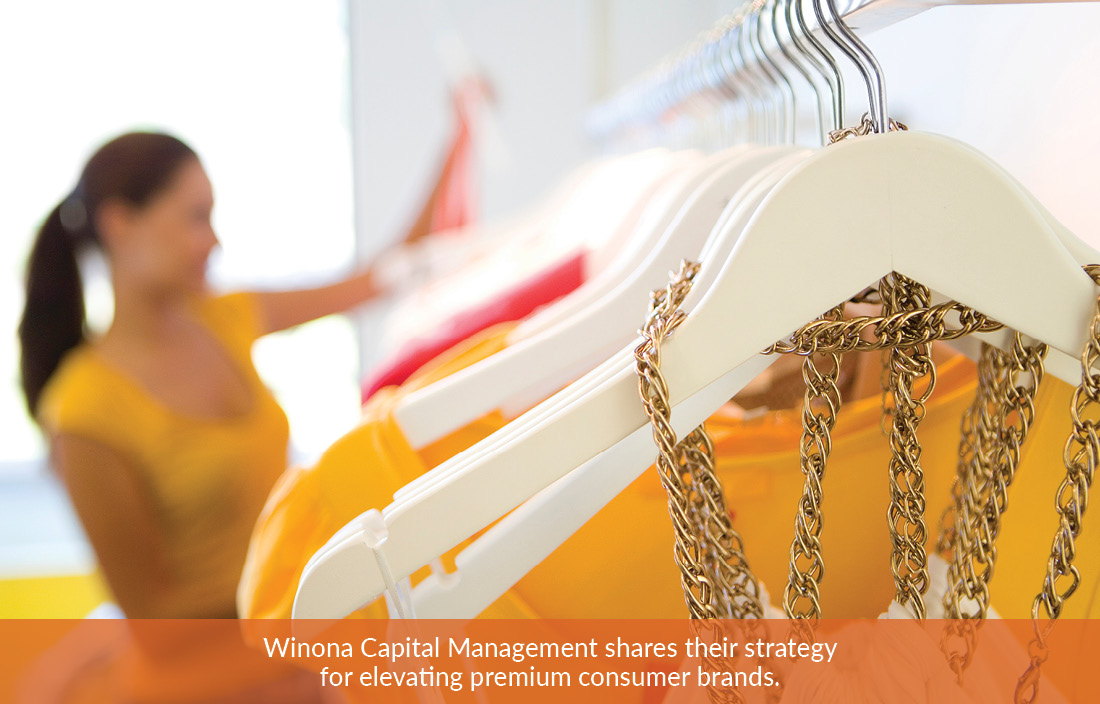The premium consumer market includes luxury items like expensive vehicles, high-end watches, and designer clothing, along with relatively inexpensive offerings such as apparel, lifestyle, and sports and recreation products. The market is defined by dynamism, resiliency, and a loyal and passionate consumer base. Chicago-based Winona Capital has been drawn to this market because of its loyal and passionate consumer base, as well as its association with high-profit margins and insulation from recessionary forces.
An overwhelming majority of growth in the luxury market is coming from younger generations of customers, whose purchasing habits, values, and technology literacy are prompting companies to adjust their strategies. Winona believes the key to accelerating revenue growth is tapping into the technology change that's influencing the industry, including advancements in augmented reality.
Full video transcript below:
Winona Capital’s investment in the luxury consumer market yields strong returns
Laird Koldyke: The premium consumer market, which we refer to as the luxury consumer market, is one that's pretty dynamic. It's one where consumers have real resiliency. It's one that consumers have allegiance to brands and allegiance to products, and we believe that that gives us a special opportunity to help build those kinds of companies. We have an expertise in that space. We at Winona Capital understand the demand curve that these companies go through. We understand how the products resonate with customers and how the quality of the products need to be there.
Matt Petrucci: The premium consumer market includes brands that have consumers that are very passionate about the products because those products hold an emotional value that the consumer is willing to pay more for. It's easy to think about the market in terms of the brands that we all know for things like luxury vehicles, high-end watches and clothing, but it also includes brands and products on a much smaller scale that are relatively inexpensive.
Laird Koldyke: The confidence that a millennial generation will give a four-inch screen as a purchasing decision is very different than someone in my generation. They will trust that screen to deliver a quality premise and a promise with the knowledge that they can return the product very easily. So Amazon and others have created this new dynamic that you can buy something very quickly on your phone knowing that if it doesn't work, you can send it back. So demand is being fulfilled in different ways. So the challenge for American brands is how do I get to that demand? How do I get to that customer?
Matt Petrucci: An overwhelming majority of the growth is coming from Generations Y and Z, changing the purchasing habits of all generations. And this shift in mindset is really pushing companies to rethink not only what they sell, but how they sell it. Younger generations are increasingly distrusting of larger corporations. They want to buy from smaller companies, trendier companies that fit with their ideals and values. They don't always trust that the large companies can deliver that so a lot of that is pushing growth to the smaller company.
Laird Koldyke: We help companies build value three ways. We want to accelerate their revenue growth, we want to help them expand their profits and we will help build the brand. And we feel if we do that well, we will maximize the ultimate value in the business for ourselves and the shareholders and the founders of the business. And if we do that, we believe that companies who want the brands, they will pay for revenue growth, but they will pay incrementally more if they believe there's true brand power and true brand premise that they can expand upon.
Matt Petrucci: Drivers of value tend to be one-third growth, one-third profitability, and one-third brand. Buyers will certainly pay for growth and profitability, but will pay incrementally more for a great brand.
When you start to think about some of the emerging technologies, we're going to start to see even bigger changes coming through. Take smart mirrors, for example. We're going to start to see these show up in retail stores and fitting rooms where you can go into the fitting room, try out an outfit and you'll see your reflection as you normally would, but then start to see you in that image virtually and see that outfit in every color that is available and actually just make the purchase right there in the fitting room. And then that mirror could take very precise body measurements and ultimately, that forces the clothing industry to be more and more customized.
Laird Koldyke: It's important that as we help build these businesses, we're building a business that has replicability, and predictability, and assurance. Part of that is by making sure that not only are the products and services the best in class they can be, but also that the company itself is... It knows what it's doing and running its own business. And in order to do that, we have to rely on our own providers, and our own service providers, and our advisors, and our consultants to help us make sure and assist these businesses that they are doing the right back-office work, that their financial team is right, that their human resources team is right. And so our alliances with our service providers like Plante Moran help us build those businesses. And Plante Moran comes in and assures us that the accounting practices are right, that our tax treatments are right, and that our tax planning is right, and that as we get ready to sell a business, we're delivering a very clean financial company.
Matt Petrucci: Timing is critical when investing in this market. You have to find a company with a brand that has products in the marketplace, those products have been tested, they have a following, and now they really need help taking that company and brand to the next level. And if you wait too long, now that company's larger, certainly more expensive to purchase, it might not have the growth opportunities that it once had.





